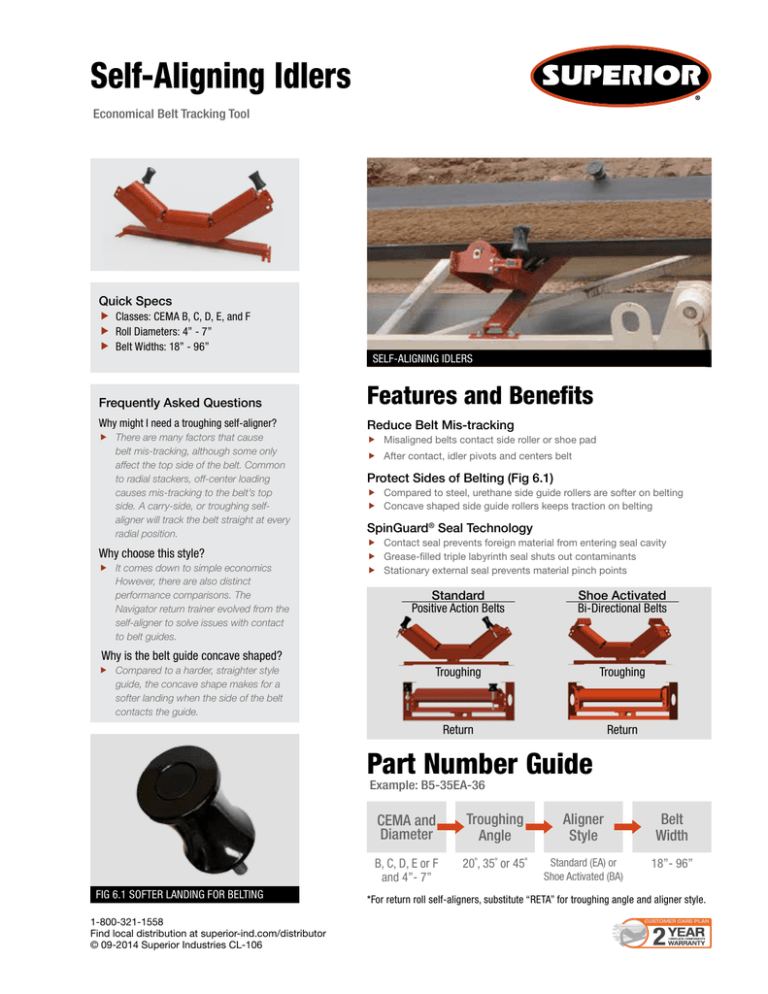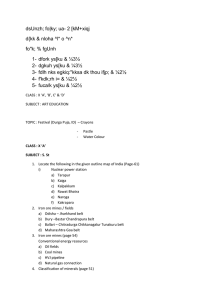Self-Aligning Idlers - Superior Industries
advertisement

Self-Aligning Idlers Economical Belt Tracking Tool Quick Specs Classes: CEMA B, C, D, E, and F Roll Diameters: 4” - 7” Belt Widths: 18” - 96” SELF-ALIGNING IDLERS Frequently Asked Questions Features and Benefits Why might I need a troughing self-aligner? Reduce Belt Mis-tracking There are many factors that cause belt mis-tracking, although some only affect the top side of the belt. Common to radial stackers, off-center loading causes mis-tracking to the belt’s top side. A carry-side, or troughing selfaligner will track the belt straight at every radial position. Why choose this style? It comes down to simple economics However, there are also distinct performance comparisons. The Navigator return trainer evolved from the self-aligner to solve issues with contact to belt guides. Misaligned belts contact side roller or shoe pad After contact, idler pivots and centers belt Protect Sides of Belting (Fig 6.1) Compared to steel, urethane side guide rollers are softer on belting Concave shaped side guide rollers keeps traction on belting SpinGuard® Seal Technology Contact seal prevents foreign material from entering seal cavity Grease-filled triple labyrinth seal shuts out contaminants Stationary external seal prevents material pinch points Standard Positive Action Belts Shoe Activated Bi-Directional Belts Troughing Troughing Return Return Why is the belt guide concave shaped? Compared to a harder, straighter style guide, the concave shape makes for a softer landing when the side of the belt contacts the guide. Part Number Guide Example: B5-35EA-36 FIG 6.1 SOFTER LANDING FOR BELTING 1-800-321-1558 Find local distribution at superior-ind.com/distributor © 09-2014 Superior Industries CL-106 CEMA and Diameter Troughing Angle Aligner Style Belt Width B, C, D, E or F and 4”- 7” 20˚, 35˚ or 45˚ Standard (EA) or Shoe Activated (BA) 18”- 96” *For return roll self-aligners, substitute “RETA” for troughing angle and aligner style. CUSTOMER CARE PLAN






